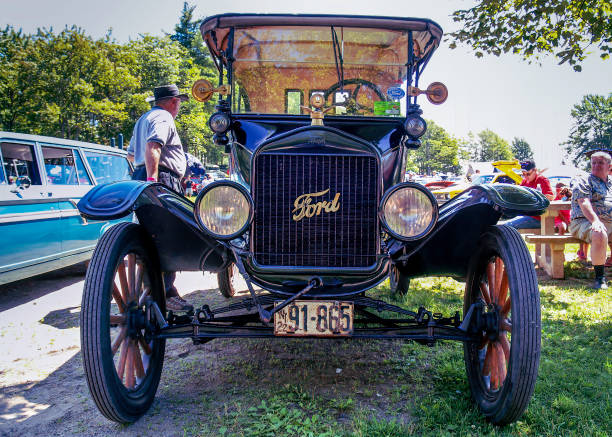People tend to take modern transportation for granted; with the press of a button and the depression of a pedal, people can go virtually anywhere their hearts desire in their cars.
Modern cars require almost zero maintenance when compared to their ancestors. As long as the oil is changed regularly, it seems like a modern car will go on forever, so long as the owner is responsible.
This wasn’t the case at the turn of the 20th century.
In fact, the high price of most automobiles was just one of many things that kept people from owning an automobile from 1886, the year when Karl Benz invented the internal combustion engine to 1908, when Henry Ford released his Model T, the year when it is generally accepted that the motorcar went mainstream.
Even getting a vehicle started was a chore. According to the Model T Club of America, getting the vehicle running required a checklist similar to that of a small Cessna aircraft.
First, the fuel line had to be turned to the “on” position and the spark checked as well as the throttle to be sure they are in the correct position; otherwise the engine could get “flooded” with fuel causing the driver to have to wait 15 or so minutes for the carburetor to clear. The throttle and spark were generally operated by small metal levers on the steering wheel.

Next, the motorist has to make sure the ignition is turned to “battery,” and now the driver faces the hardest, and most dangerous, part.
In place of the start button we have today, early cars (yes, even the most expensive) had to be manually started using a crank rod. Depending on the size of the engine, a false start could result in a “backfire” that could easily break someone’s arm.
Today, it is considered sexist to say that women could not get a Model T started. Women could, and did, take to motoring, though.
In the very early days, without telling anyone what she was doing, Karl Benz’ wife, Bertha, loaded up their two children and took off for a neighboring town, just to prove women could drive a car just like any man.
Also, no one can forget the tales of Alice Roosevelt, the teenage daughter of President Teddy Roosevelt, driving the White House staff mad as she gallivanted all over Washington, D.C. in her automobile.
Despite the fact that women technically could drive a car, it took someone, whether male or female, of sufficient strength to start the lawn-mower-seized engine of a Model T and above average strength to get a Duesenberg straight-8 humming.
In 1911, Detroit inventor Charles Kettering solved the starting issues with the invention of the electric starter, a device first used on the 1912 Cadillac models.

In the early days, driving a car was only a small part of car ownership. Today, an owner’s manual may consist of a QR code that warns against drinking the contents of the battery. Old car manuals, in contrast, were the size of an average city’s phone directory.
Much of what the owner’s manual offered were monthly maintenance details.
“Refined” oil was nowhere near as clean and free of debris as modern synthetic oils, and the fact that most roads were unpaved meant that oil changes were frequent. A heavy user might expect to change their oil once a month.
Road debris also meant that some 30 odd “lubrication” points also had to be attended to and anything made of rubber, such as radiator hoses and fan belts had to be changed out with regularity or a hapless owner might find himself sitting shotgun on a farmers horse-drawn wagon being towed back into town.
Early car owners became used to listening for odd noises coming from under the hood and paying attention to the color and thickness of the smoke coming out of the tailpipe.
All of these things considered, it is no wonder that it took nearly 30 years for the car to become embraced by the public.
Scott Hudson is the Senior Investigative Reporter, Editorial Page Editor and weekly columnist for The Augusta Press. Reach him at scott@theaugustapress.com











